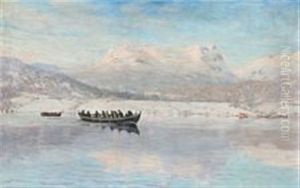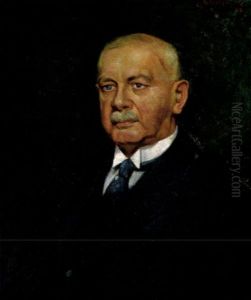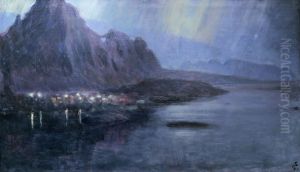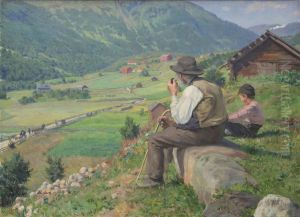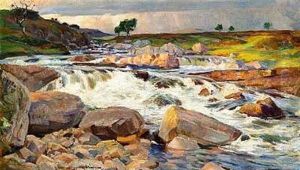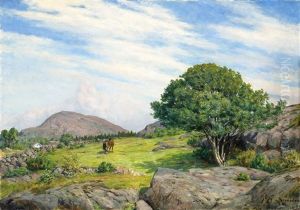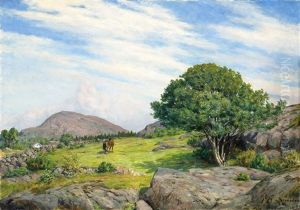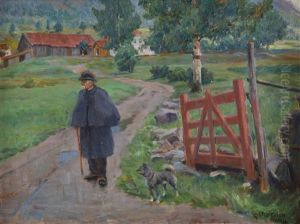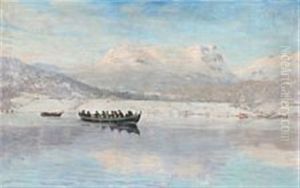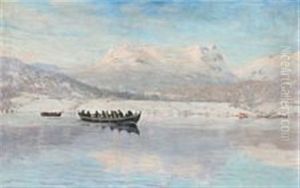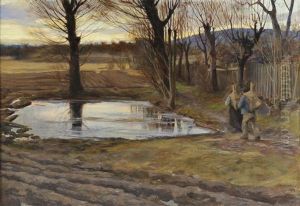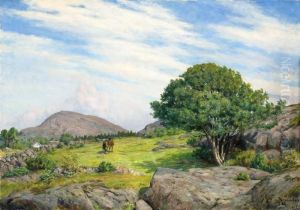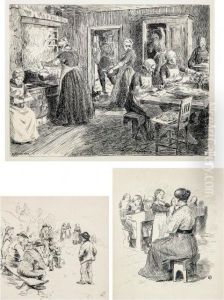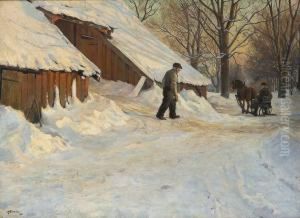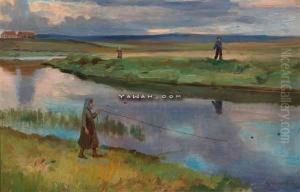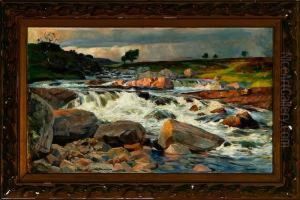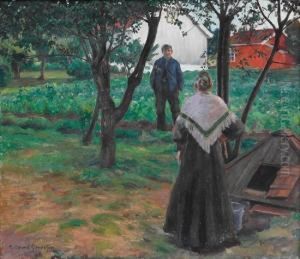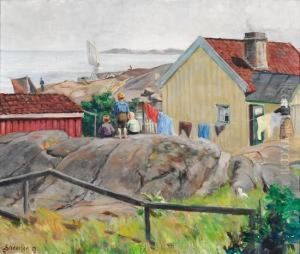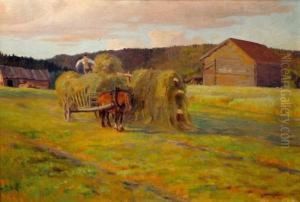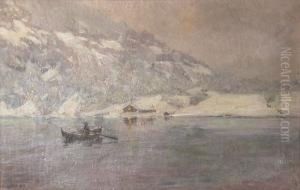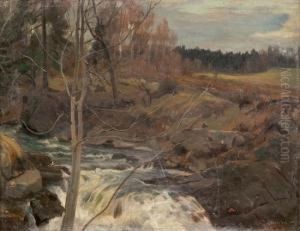Gudmund Stenersen Paintings
Gudmund Stenersen was a Norwegian painter born on September 11, 1863, in Modum, Norway. He is known for his contributions to portraiture and genre painting in Norway during the late 19th and early 20th centuries. Stenersen studied under the guidance of several prominent artists of the time, including Christian Krohg and Erik Werenskiold, who were central figures in the naturalist movement in Norway.
Stenersen's early work was largely influenced by the naturalist aesthetic, characterized by a realistic depiction of everyday life and social issues. However, as his style evolved, Stenersen incorporated more impressionistic elements into his paintings, which became known for their vivid use of color and light.
Throughout his career, Stenersen maintained a focus on portraiture, capturing the likenesses of many notable individuals of his time. His portraits are appreciated for their psychological depth and the ability to convey the personality of the sitter. In addition to portraits, Stenersen also painted landscapes and genre scenes that reflected Norwegian culture and lifestyle, contributing to the national romantic movement that sought to define a unique Norwegian identity in the arts.
Gudmund Stenersen was not only a painter but also an illustrator and graphic artist. He contributed illustrations to books and periodicals, further showcasing his versatility as an artist. His works were exhibited widely in Norway and abroad, earning him recognition in the art community.
Later in life, Stenersen also became involved in art administration and served as a board member for several art institutions, including the National Gallery of Norway. He played a role in shaping the artistic scene in Norway during his lifetime.
On January 23, 1934, Gudmund Stenersen passed away in Oslo, Norway. Although not as widely known internationally as some of his contemporaries, Stenersen left a significant mark on Norwegian art history through his dedication to portraiture, his involvement in the national romantic movement, and his influence on the generations of artists who followed.
